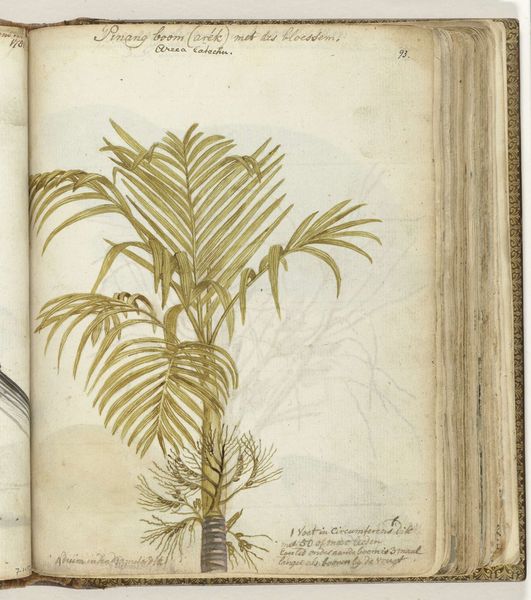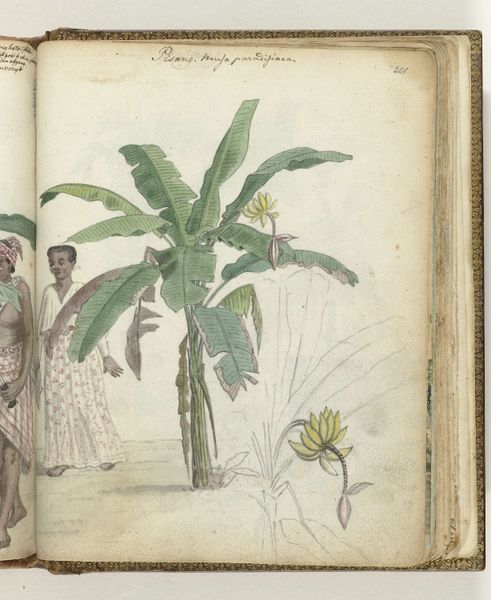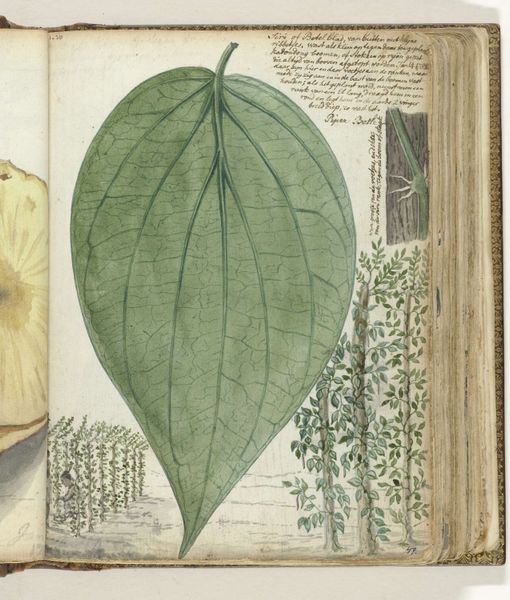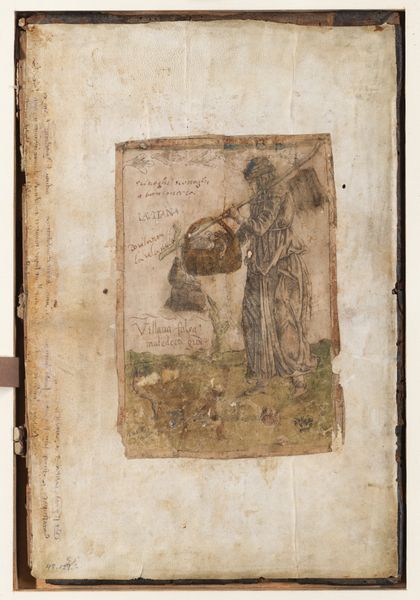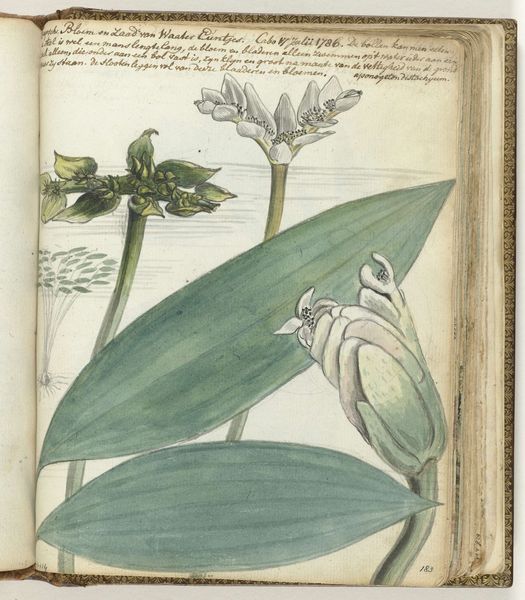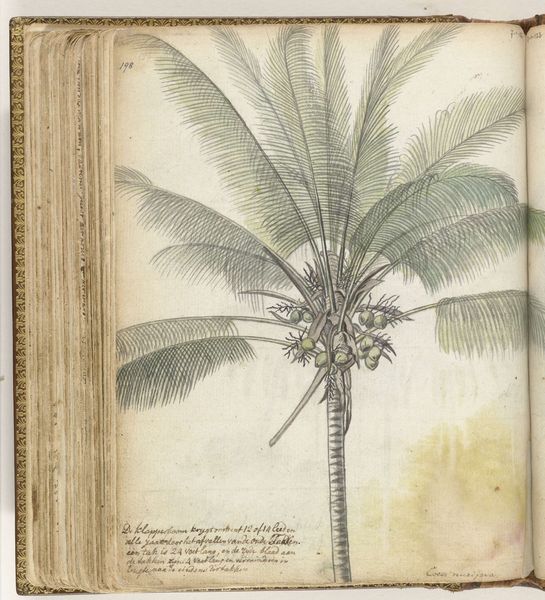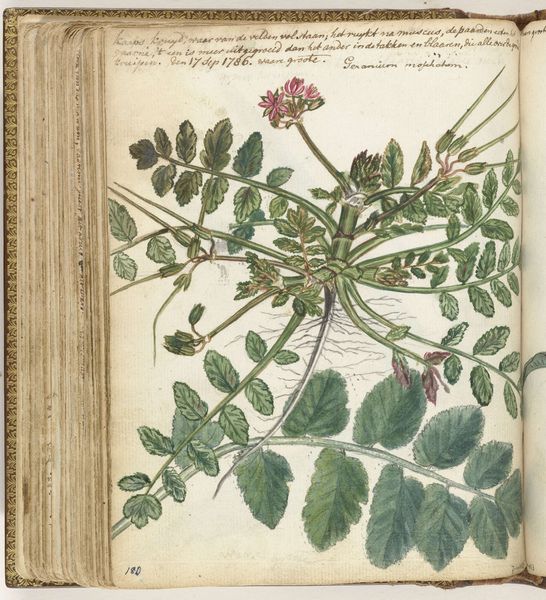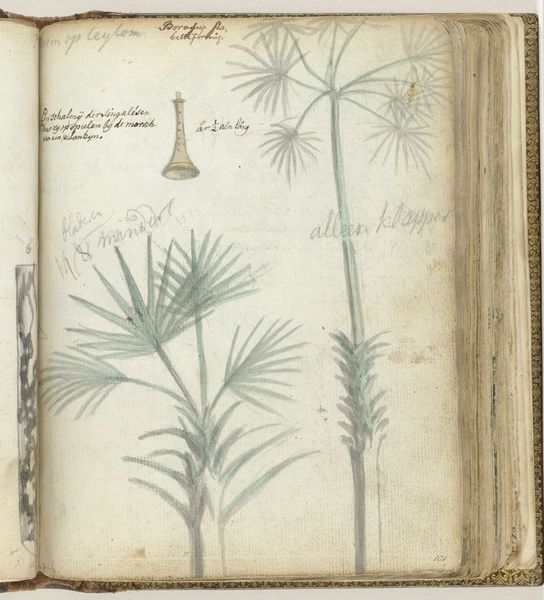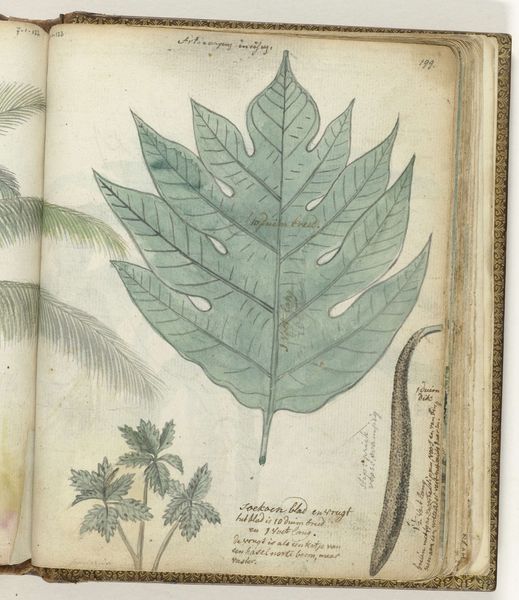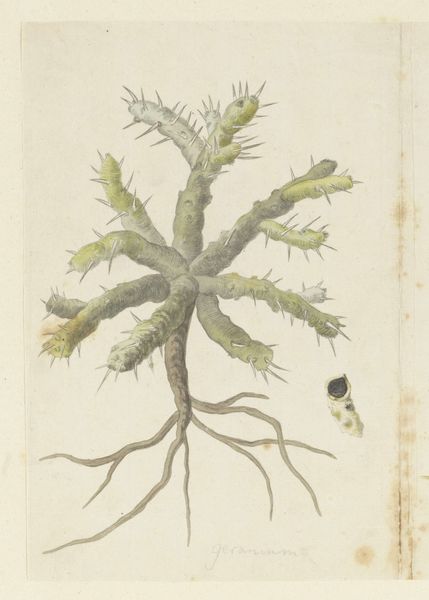
drawing, paper, watercolor, pencil
#
drawing
#
water colours
#
landscape
#
figuration
#
paper
#
watercolor
#
coloured pencil
#
pencil
#
orientalism
#
watercolor
Dimensions: height 195 mm, width 310 mm
Copyright: Rijks Museum: Open Domain
Editor: Here we have Jan Brandes' "Pisangboom," likely created between 1779 and 1788. It's a watercolor and pencil drawing on paper, depicting what seems to be a banana plant. I'm struck by how this botanical study is placed within a cultural context with the inclusion of the people alongside. What catches your eye in this piece? Curator: Well, considering the period, it's fascinating to view this through the lens of colonialism and Orientalism. Brandes, likely a European traveling through Southeast Asia, isn't just documenting a plant; he's capturing a "resource," contextualized within a foreign landscape and its inhabitants. It highlights the European gaze and its relationship to the "exotic" other, doesn't it? Editor: Yes, I can definitely see that now. So the inclusion of the local figures… is that part of asserting dominance or...? Curator: Precisely. They become part of the landscape, almost accessories to the "discovery" and classification of the plant. Notice how they're positioned - are they active participants or passive observers in this botanical tableau? Their inclusion is strategic, reinforcing a power dynamic prevalent during that era. This reflects not just natural history, but the political undertones of image-making in a colonial context. Editor: I never thought of it that way. I was just focused on the details of the drawing itself. Curator: The artistic details, rendered so precisely, almost mask the underlying ideology. Brandes meticulously records the flora, seemingly objectively, while simultaneously participating in a broader project of colonial knowledge production and representation. It really prompts questions about the supposed neutrality of scientific or documentary art, wouldn’t you agree? Editor: Absolutely. I’ll definitely look at similar artworks with fresh eyes now. Thanks for pointing that out! Curator: My pleasure. It's these historical layers that transform a seemingly straightforward botanical drawing into a complex cultural artifact.
Comments
No comments
Be the first to comment and join the conversation on the ultimate creative platform.
